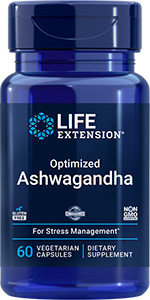
Newsletter
Newsletter
Greater antioxidant intake associated with lower risk of premature mortality from cardiovascular disease, all causes

A study found that men and women with cardiovascular disease who consumed a higher amount of antioxidant vitamins and minerals had a lower risk of mortality during follow-up compared with those who consumed low amounts.
The study included 1,395 participants in the National Health and Nutrition Examination Survey (2001-2010) who had cardiovascular disease, which included coronary heart disease, congestive heart failure, heart attack, stroke or angina at the beginning of the study. Dietary recall interview responses were analyzed for the intake of vitamins A, C and E, carotenoids, selenium and zinc, and composite dietary antioxidant indexes (CDAI) were calculated. Authors Xintao Hu and colleagues explained that CDAI “takes into account the contribution of various antioxidants to the body’s antioxidant capacity.”
Six hundred eighty-two deaths occurred through 2019. Having an intake of vitamin C that was among the highest one-third of individuals in the study was associated with an adjusted 27% lower risk of death from all causes during follow-up in comparison with the risk associated with vitamin C intake that was among the lowest third. For vitamin E, those whose intake was among the top third had a 32% lower risk of mortality compared with the lowest third. Carotenoids were also protective, with an adjusted 22% lower risk of mortality experienced by individuals whose intake was among the highest. When composite dietary antioxidant index was evaluated, men and women among the top third had a 38% lower risk of mortality during follow-up.
Evaluation of the effects of antioxidants on the risk of dying from cardiovascular disease revealed that high intake of vitamin E and zinc was associated with respective 41% and 36% lower risks, and a high CDAI was associated with a 42% lower risk.
“Higher levels of dietary antioxidants are associated with a reduced risk of both all-cause and cardiovascular-cause mortality in patients with cardiovascular disease,” the authors concluded. “These findings suggest that increasing antioxidant intake may serve as a potential strategy for improving outcomes in this population.”
The study was reported April 9, 2025, in BMC Public Health.1
Products
Apply What You've Learned: Antioxidants
- Antioxidants are molecules that prevent oxidation by neutralizing unstable atoms or molecules called free radicals, which form during normal metabolism. Free radical damage has been linked with signs of aging, cancer, cardiovascular disease, cataracts, diabetes, liver disease, neurodegenerative diseases and other disorders.2
- Vitamins A, B1, B2, B6, C and E, carotenoids that include beta-carotene, lutein and lycopene, and minerals including selenium, zinc and copper have antioxidant properties and can be obtained from the food we consume.3-7
- Plants contain various flavonoids that have antioxidant properties. Flavonoids are abundant in fruit, vegetables, grains, tea and wine.8
- Since most people consume diets that provide less than optimal nutrition, they can boost their protection against free radical damage by adding antioxidants.
References
- Hu X, Zhao Z, Quian A et al. Association of independent dietary antioxidant intake, and CDAI level with risks of all-cause and cardiovascular-cause death among population with cardiovascular disease. BMC Public Health. 2025 Apr 9;25(1):1327. doi: 10.1186/s12889-025-22481-1.
- Neha K, Haider MR, Pathak A et al. Medicinal prospects of antioxidants: A review. Eur J Med Chem. 2019 Sep 15:178:687-704. doi: 10.1016/j.ejmech.2019.06.010.
- Mrowicka M, Mrowicki J, Dragan G et al. The importance of thiamine (vitamin B1) in humans. Biosci Rep. 2023 Oct 31;43(10):BSR20230374. doi: 10.1042/BSR20230374.
- Suwannasom N, Kao I, PruB A et al. Riboflavin: The Health Benefits of a Forgotten Natural Vitamin. Int J Mol Sci. 2020 Jan 31;21(3):950. doi: 10.3390/ijms21030950.
- Matxain JM, Ristilä M, Strid A et al. Theoretical study of the antioxidant properties of pyridoxine. J Phys Chem A. 2006 Dec 7;110(48):13068-72. doi: 10.1021/jp065115p.
- Theodosis-Nobelos P, Rekka EA. The Antioxidant Potential of Vitamins and Their Implication in Metabolic Abnormalities. Nutrients. 2024 Aug 16;16(16):2740. doi: 10.3390/nu16162740.
- Arias A, Feijoo G, Moreira MT. Exploring the potential of antioxidants from fruits and vegetables and strategies for their recovery. IFSET. 2022 May; 77: 102974. doi: 10.1016/j.ifset.2022.102974.
- Panche AN, Diwan AD, Chandra SR. Flavonoids: an overview. J Nutr Sci. 2016 Dec 29;5:e47. doi: 10.1017/jns.2016.41
Related Life Extension Magazine® Articles

Oxidative Stress and Dietary Antioxidants in Neurological Diseases
The book Oxidative Stress and Dietary Antioxidants in Neurological Diseases ties the oxidative stress processes involved in neurological disease with nutrient strategies to combat them.

Maximize the Effects of Vitamin C
When combined with specific plant compounds, vitamin C absorption is improved along with its sustainability in the bloodstream.
Highlight
Wellness Blog
Life Extension’s Wellness Blog provides timely information concerning topics of interest to anyone concerned about their health and well-being. Subscribe to the blog to receive regular email updates.
Learn MoreLife Extension Magazine® Issue Now Online
A remarkable number of healthy-longevity findings have been published over the past 18 months.
Sensoril® is a trademark of a Kerry Company.



